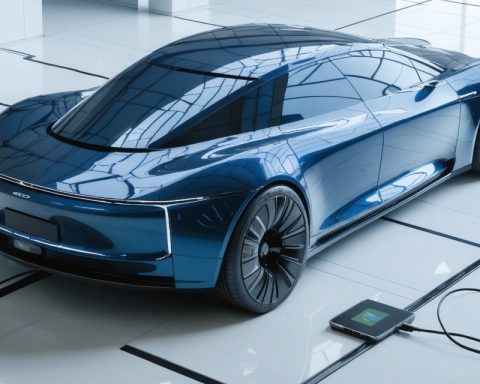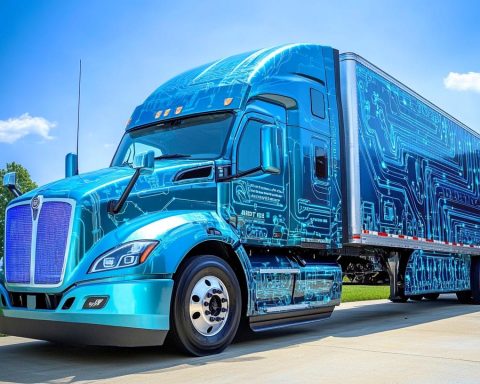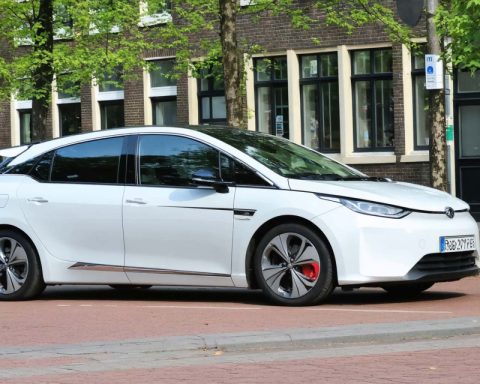- BYD leads the new energy vehicle industry, with March marking a significant month for sales growth.
- The Song series achieved impressive sales of 96,087 units, marking a 22.42% year-on-year increase, and demonstrating model dominance.
- The Ocean and Dynasty series sold 51,501 and 44,586 units respectively, highlighting robust growth and innovation.
- The Qin series experienced a remarkable 43.91% year-on-year growth, reinforcing its strong market position.
- BYD Seal sales surged by 231.5%, reflecting strong market demand for new electric options.
- Denza brand and Fang Cheng Bao achieved significant year-on-year increases, showcasing diverse brand strength.
- Overseas sales increased by 89.22%, highlighting BYD’s expanding global reach and demand for sustainable transport.
- Overall, innovation, resilience, and sustainability drive BYD’s strategic growth and market leadership in the automotive industry.
A thrilling surge propels BYD to the forefront of the new energy vehicle industry as March marked a significant month for the Chinese automotive giant. The Song series, adorned by its Dynasty and Ocean models, took unwavering command with a sales powerhouse performance of 96,087 units, showcasing robust growth with a 22.42% year-on-year leap. This striking feat not only quashed the previous month’s figures with a 7.18% rise but further solidified the model’s dominance in the market.
Vividly carrying the banner of innovation, the Ocean series sailed smoothly past the tide with 51,501 units, while its Dynasty counterpart clinched 44,586 sales—both boasting impressive increments. Following this trailblazing path was the Qin series, galloping with a staggering 43.91% surge in year-on-year growth, clinching second place in the lineup. The BYD Seal portrayed dramatic dynamism, with sales catapulting 231.5% year-on-year, signifying a market thirsty for fresh electrifying choices.
Despite some models experiencing dips, the broader narrative of March unfolds a relentless pursuit of growth and market expansion. BYD’s ability to fan out across diverse segments is exemplified by its niche brands. The Denza brand’s strides in elegance and technology saw 12,620 vehicles greeted by new owners, while the bespoke Fang Cheng Bao glimmered with a 126.79% year-on-year uptick.
The worldwide stage warmly embraced BYD’s offerings, with overseas sales soaring past 72,723 units—an 89.22% increase that underlines BYD’s expanding global footprint and the swelling tide of demand for sustainable transportation.
Through these vivid tales of growth and resilience, BYD cements its illustrious journey towards redefining mobility. With innovation and strategic flair steering the wheel, the aspiration to electrify the world’s drive resonates ever more powerfully. The key takeaway from BYD’s electrifying chapter in March? Innovation, resilience, and a persistent pursuit of sustainability are not just aspirations—they are the road ahead for the automotive industry.
Secrets Behind BYD’s Meteoric Rise in the New Energy Vehicle Market
Analyzing BYD’s Dominance in the New Energy Vehicle Industry
BYD’s impressive performance in March highlights its strategic position as a frontrunner in the new energy vehicle (NEV) market. The surge in sales, especially in their Song, Ocean, and Dynasty models, showcases their robust growth and adaptability. Let’s delve into additional facts, insights, and market trends that reinforce BYD’s leadership.
How-To Steps for Sustainable Growth in the NEV Sector
1. Diversify Product Offerings: BYD’s model variety, such as the Ocean and Dynasty series, caters to different customer segments, providing tailored solutions to meet diverse consumer needs.
2. Focus on Innovation: Continuous innovation is pivotal. BYD’s technological advancements ensure they remain ahead in the competitive NEV landscape.
3. Expand Globally: By increasing global sales by 89.22%, BYD has demonstrated the importance of penetrating and expanding into international markets.
4. Leverage Positive Market Trends: Align with the global push for sustainable mobility solutions, capitalizing on the growing demand for electric vehicles.
Real-World Use Cases
BYD vehicles are now a common sight in urban areas, where they offer sustainable commuting solutions. Their extensive range and efficiency make them ideal for city dwellers and environmentally-conscious consumers.
Market Forecasts & Industry Trends
– Global NEV Demand: With the global emphasis on sustainability, the NEV market is projected to grow significantly. Analysts predict a compound annual growth rate (CAGR) of 21.7% from 2021 to 2028 (Fortune Business Insights).
– Technological Advancements: Battery improvements and autonomous driving technologies will be key drivers of growth in the NEV market.
Controversies & Limitations
– Battery Production Concerns: Despite the advances in NEV technology, environmental concerns regarding battery production and recycling remain a topic of discussion.
– Charging Infrastructure: The insufficient charging infrastructure in some regions might limit the growth potential of NEVs.
Features, Specs & Pricing
– Battery Life: BYD’s models feature cutting-edge battery technology that offers competitive mileage.
– Affordability: BYD’s pricing strategy reflects a balance between affordability and premium features, making their vehicles accessible to a broad customer base.
Security & Sustainability
BYD is committed to sustainability, as evidenced by their investment in energy-efficient manufacturing processes. Their vehicles are equipped with advanced safety features, ensuring a secure driving experience.
Pros & Cons Overview
Pros:
– Strong market presence and brand recognition.
– Broad product lineup catering to various customer needs.
– Commitment to sustainability and innovation.
Cons:
– Limited charging infrastructure in certain areas.
– Concerns over battery life and environmental impact of production.
Actionable Recommendations
1. Stay Informed: Keep up with the latest NEV trends and technologies to make informed purchasing decisions.
2. Consider Total Cost of Ownership (TCO): Evaluate the long-term savings potential of NEVs in terms of fuel, maintenance, and environmental benefits.
3. Explore Incentives: Many regions offer incentives for purchasing electric vehicles. Investigate to benefit from potential tax breaks or rebates.
In conclusion, BYD’s recent achievements underscore the importance of innovation, strategic product diversification, and global market expansion. As consumers increasingly shift towards sustainable mobility solutions, BYD’s trajectory serves as a blueprint for success in the NEV industry.
For more insights into the evolving automotive landscape, visit BYD.















